6 Tips to Fix Recovery Drive Full in Windows 10/8/7
How to Fix Recovery Drive Full Error in Windows 10/8/7 (6 Ways)
"Low Disk Space. You're running out of disk space on recovery d drive. Click here to see if you can free up space on this drive." Whenever you stuck in recovery drive full error, follow these solutions below:
| Workable Solutions | Step-by-step Troubleshooting |
|---|---|
| Tip 1. Extend recovery partition | Open Qiling Partition Master and click "Adjust with 1-click" on the right panel....Full steps |
| Tip 2. Free up space | Download Qiling CleanGenius for free and install it on your computer. Select "Large File Cleanup"...Full steps |
| Tip 3. Disable system protection | Right-click on "This PC"/"My Computer" and choose "Properties" and then click...Full steps |
| Tip 4. Unhide protected files | Open Windows Control Panel and navigate to File Explorer Options in Windows...Full steps |
| Tip 5. Run disk cleanup | In the search box on the taskbar, type disk cleanup, and select "Disk Cleanup"...Full steps |
| Tip 6. Delete recovery drive | On Qiling Partition Master, right-click on the hard drive partition which you want to delete...Full steps |
Low Space Warning - Recovery D Drive Almost Full Error
If you are a Dell or HP user, you might have the same experience below:
"My recovery disk of 16GB on my HP laptop is full due to the preload folder using all the space. I can't open this folder but get the following messages that I'm running out of recovery disk space and files are continuously copied into the preload folder. This even slows down my PC. So I'm wondering whether I can free up the recovery disk and solve the "Recovery Disk Space Is Full" error with ease in Windows 10?"
So how to fix the recovery disk full issue in Windows 10? Below, you'll find 6 effective methods to free up the recovery disk and solve the recovery disk full issue in Windows 10.
Tip 1. Extend Recovery Partition to Fix Recovery Drive Full Error
When your recovery partition gets full, or you receive the low disk space warning, the easiest way to solve this kind of problem is to extend the partition. Most free partition tools allow you to merge unallocated space or free space to the recovery drive. If there is no unallocated space or the space is not contiguous, you'll need Qiling Partition Master.
This partition magic tool makes it easy to merge unallocated or free space to the recovery drive regardless of the location of the space. What's more, it has many highlights:
- Adjust a partition to a larger or smaller one for your need.
- Merge partitions without losing data.
- Clone/migrate partition to the unallocated space.
- Migrate OS to SSD to speed up Windows.
Steps to extend the recovery partition:
Step 1. Click "Resize/Move" on the Disk management page.
When your partition is out of space, you select this partition, Qiling Partition Master will extend the partition to solve the low space issue intelligently after clicking "Resize/Move" to continue.
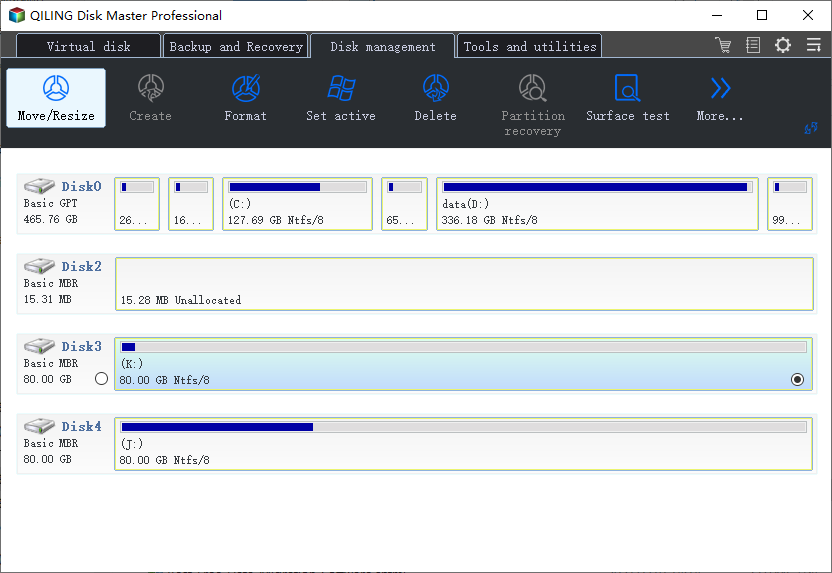
Step 2. Drag the partition to extend partition.
Drag the partition panel rightward to add the free space.
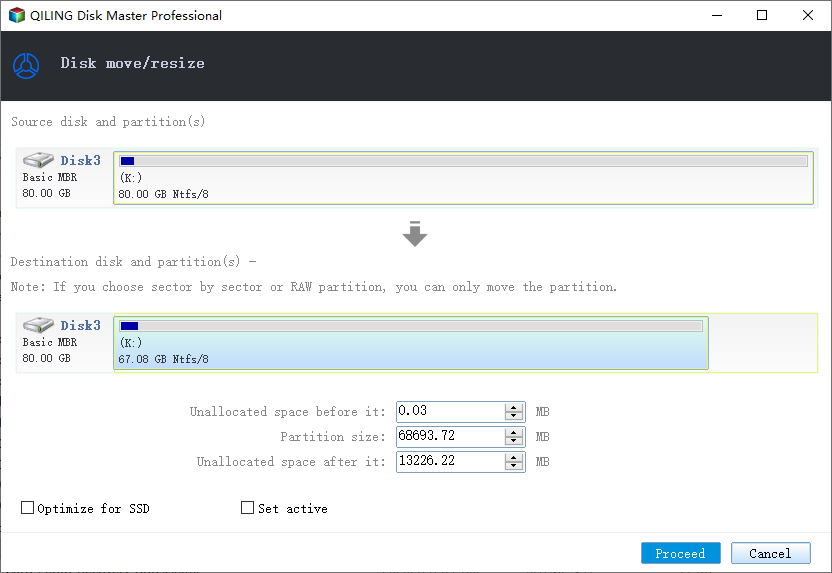
Step 3. Execute operations to extend low disk space partition.
Click the "Proceed" button to keep all changes.
Tip 2. Free Up Space on Recovery Drive Windows 10 to Fix It
If your recovery drive D, E, or F gets the low space error, you can free up space to solve the problem. My suggestion is to clean up large files. You can quickly get rid of large files with a free tool - Qiling CleanGenius. Feel free to download this software and free up recovery disk now:
Step 1. DOWNLOAD and install Qiling Partition Master Suite for free and launch it on your Windows PC.
On the suite, hover your mouse on "PC Cleaner", click the Download icon to install and launch Qiling CleanGenius.
Step 2. On Qiling CleanGenius, select "Cleanup" on the main screen, and click "Scan" to start scanning.
Step 3. When the scanning process completes, select useless large files and click "Clean" to clean large files.
Step 4. When Qiling CleanGenius completes cleaning the files you choose, click "Done" to finish the process.
Tip 3. Disable System Protection to Fix Recovery Drive Full
To stop Low Disk Space errors, ensure that System Protection is turned off for the Recovery drive in Windows 10/8.1/8/7. Then, remove files that are not related to system recovery from the drive.
In Windows 10/8.1/8/7:
Step 1. Right-click on "This PC"/"My Computer" and choose "Properties" and then click "System Protection".
Step 2. Click on the "Configure" button under the System Protection tab.
Step 3. Check whether the recovery partition is off or on.
If it shows On, select this drive and click the "Configure" button. In the pop-up window, check the Disable system protection option.
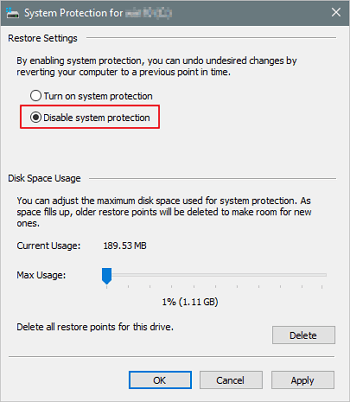
Tip 4. Unhide Protected Operating System Files
Some users say they are faced with a "hard drive full but not" error, and the recovery drive D is no expectation. Hidden files may cause this. You can try to unhide files and folders to determine whether hidden items occupy the disk space of the recovery drive.
Step 1. Open Windows Control Panel and navigate to File Explorer Options in Windows 10, 8.1, and 8.
Step 2. On the File Explorer Options window, select "Change folder and search options".
Step 3. In the Folder Options window, check "Show hidden files, folders, and drives and remove Hide protected operating system files (Recommended)".
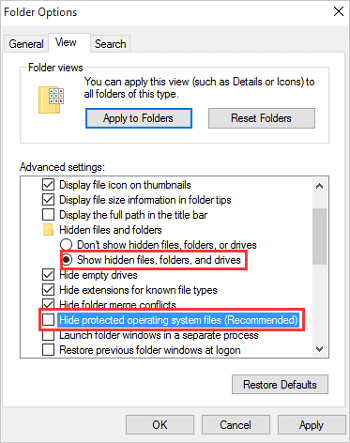
Tip 5. Run Disk Cleanup to Fix Recovery Drive Full
The recovery drive is a separate partition stored on your PC that contains all the files needed in order for you to be able to fully restore your PC if your system becomes unstable for some reason. You can clean up useless files to solve the low disk space error.
Step 1. In the search box on the taskbar, type disk cleanup, and select "Disk Cleanup" from the list of results.
Step 2. Select the drive you want to clean up, and then select "OK".
Step 3. Select the checkbox next to the type of files you want to delete.
Step 4. Press OK and wait for the process to be completed.
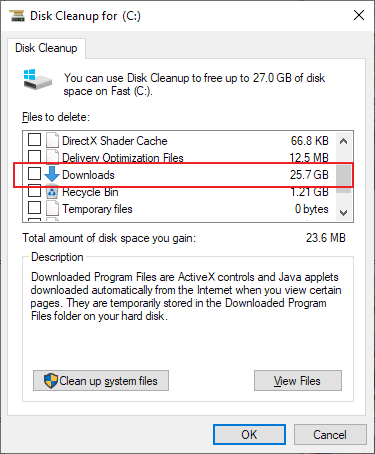
Tip 6. How to Delete Recovery Drive D in Windows 10/8/7
As I have mentioned before, a recovery partition can be used to restore your system in the event of system issues. But if you have had a system backup in advance, this method is the best choice. You can manually delete an OEM partition or use Qiling partition software. Here are the steps:
Step 1. Launch Qiling Partition Master on your computer.
Step 2. Select to delete partition or delete all partitions on hard drive.
- Delete single partition: right-click on a partition that you want to delete and choose "Delete...".
- Delete all partitions: right-click a hard drive that you want to delete all partitions, and select "Delete All...".
Make sure that you've backed up the important data on the selected partition because this manner will compeletely remove data.
Step 3. Click "OK" to confirm the deletion.
What Is a Recovery Drive/Partition in Windows 10/8/7 (Bonus Tip)
Have you ever noticed that your computer often has a recovery partition on your system disk? A recovery partition helps to restore the factory settings of the OS (operating system) if there is some kind of system failure. A recovery partition usually has no drive letter, and only a Help option is provided in Disk Management. Generally, there are two types of recovery partitions.
One is the most widespread one. It is installed with the Windows operating system on a GPT disk and holds the Windows Recovery Environment. This partition only takes up several hundred MB disk space, as it only contains the bare operating system.
The other is set by the computer manufacturer (like HP, Dell, Lenovo). This kind of recovery partition occupies more space than the Windows recovery partition and is usually marked as OEM Partition. With this recovery partition, you can restore the computer to factory default settings, including OS, drivers, and some build-in applications.
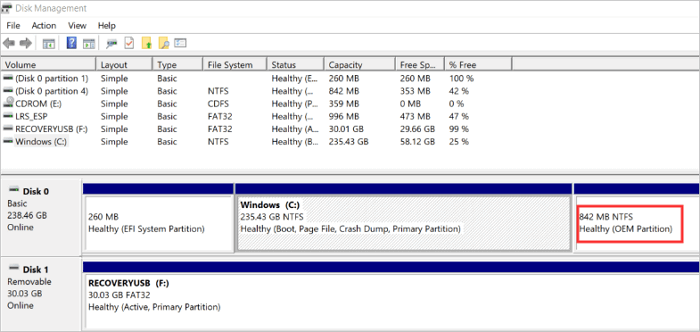
Conclusion
When you find Recovery drive full in Windows 10, 8.1, 8, or 7, you have six solutions for corresponding situations. Qiling partition magic tool plays a vital role in this process. It also helps you copy the HP Recovery partition to a new drive if the need ever arises.
Recovery Drive Full Frequently Asked Questions
If you use the Recovery drive to store files, or if a backup or restore program uses the Recovery drive to store files, the drive quickly becomes full and can cause the recovery drive full errors. You can solve them with the help of the six solutions above. If you still have questions, you can read on.
1. How do I free up space on my recovery drive?
You can free up space on your recovery drive in two ways:
- Use Qiling CleanGenius
- Try Disk Cleanup
2. Why is my recovery drive full?
As you know, recovery drive actually refers to a partition on the main hard disk, not an actual and physical drive. If you store files on this recovery drive or a backup and restore tool writes some files to it, this drive will get full.
3. What happens if I delete my recovery drive?
As to the question "can I delete recovery partition", the answer is definite. You can delete a recovery partition without affecting the running OS. Average users should keep the recovery partition as it is in the hard drive, as such a partition won't take up too much space.
4. How often should I create a recovery drive?
Windows updates to improve security and PC performance periodically so it is recommended to recreate the recovery drive annually. Personal files and any applications that did not come with your PC will not be backed up. You'll need a USB drive that's at least 16GB.
Related Articles
- [2022 Fix] How to Activate Qiling Partition Master | Full Guide
- How to Wipe Hard Drive in Windows 11 (Get Your Answer)
- How Do I Convert Bootable Disk or Bootable USB to Normal in Windows 11
- Windows 10 File Transfer Stuck at 99%? Fixes Are Here!